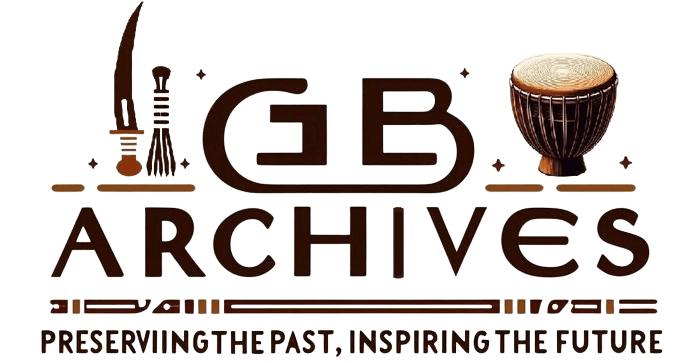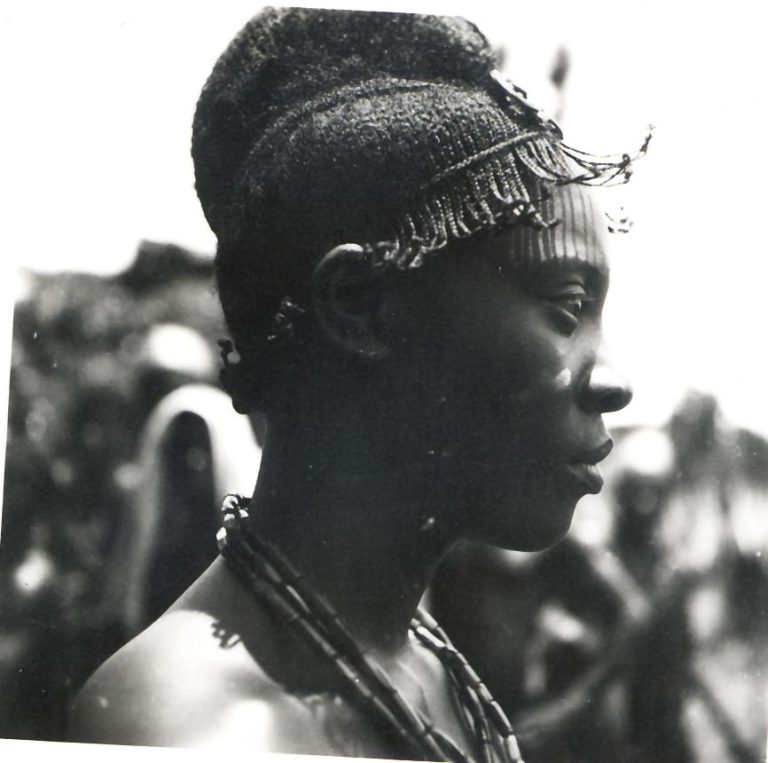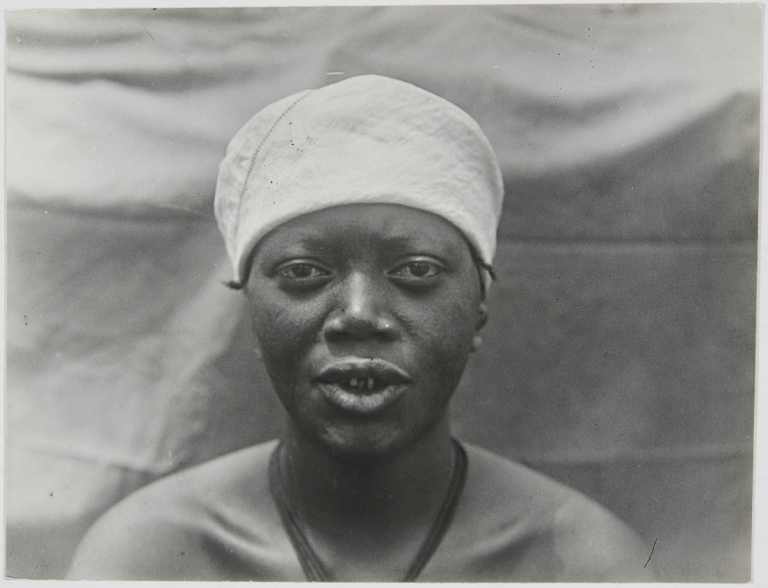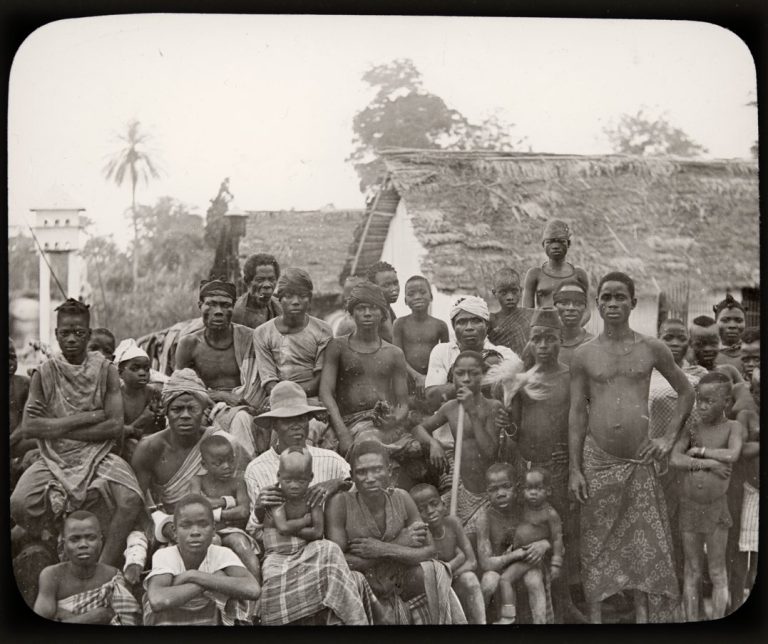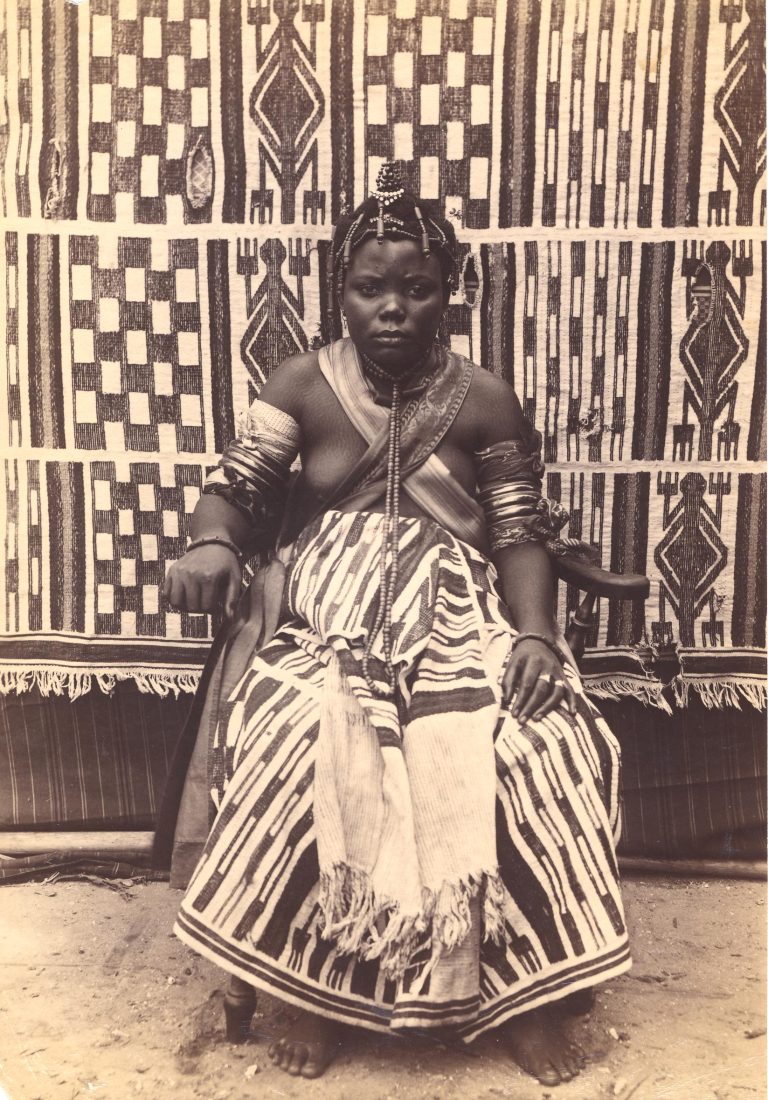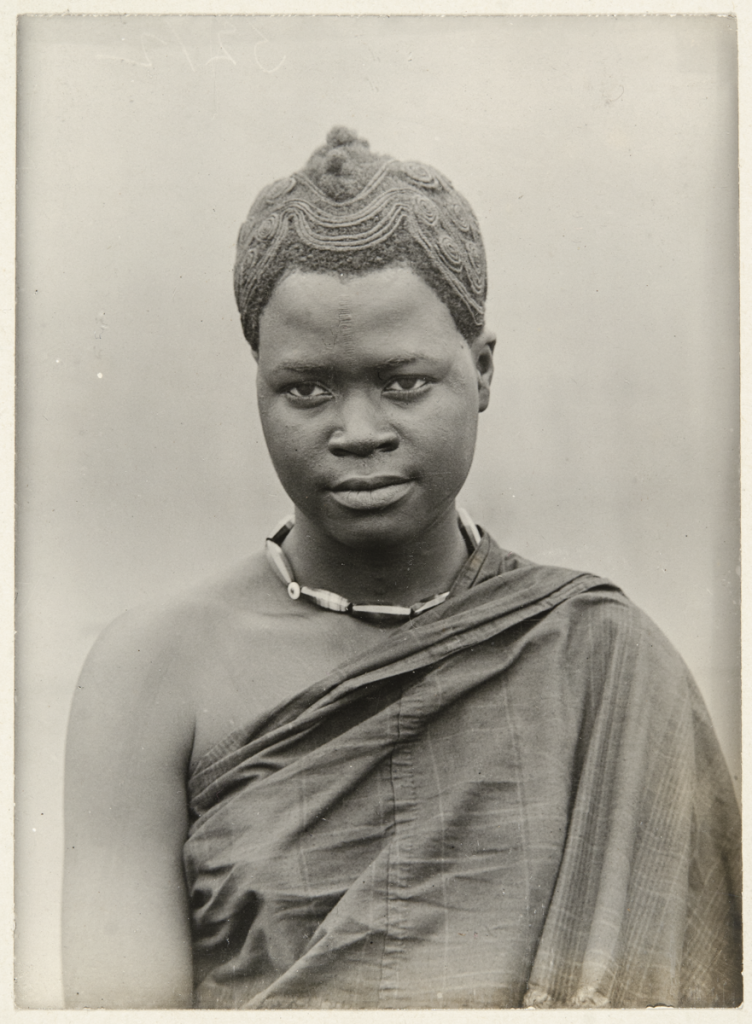
A black and white photograph of an Igbo woman, circa 1910. She has her hair styled in an elaborate pattern with geometric designs. She is wearing a beaded necklace and a cloth wrapped around her chest. The photograph was taken by Northcote Whitridge Thomas.
Explore Further
For more on this topic, explore the post below. It provides a deeper insight.
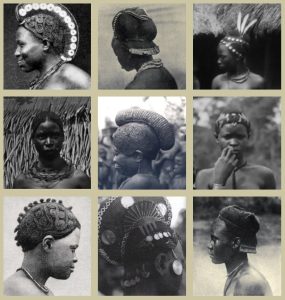 Fashion Insights
Fashion Insights
Igbo women’s hairstyles have long been a symbol of cultural identity, artistry, and social status. These hairstyles, which have evolved over centuries, are not merely about aesthetics but also about conveying deeper cultural meanings. This post explores the historical significance, materials and techniques, cultural context, and modern relevance of Igbo women’s hairstyles, showcasing their rich heritage and enduring legacy.
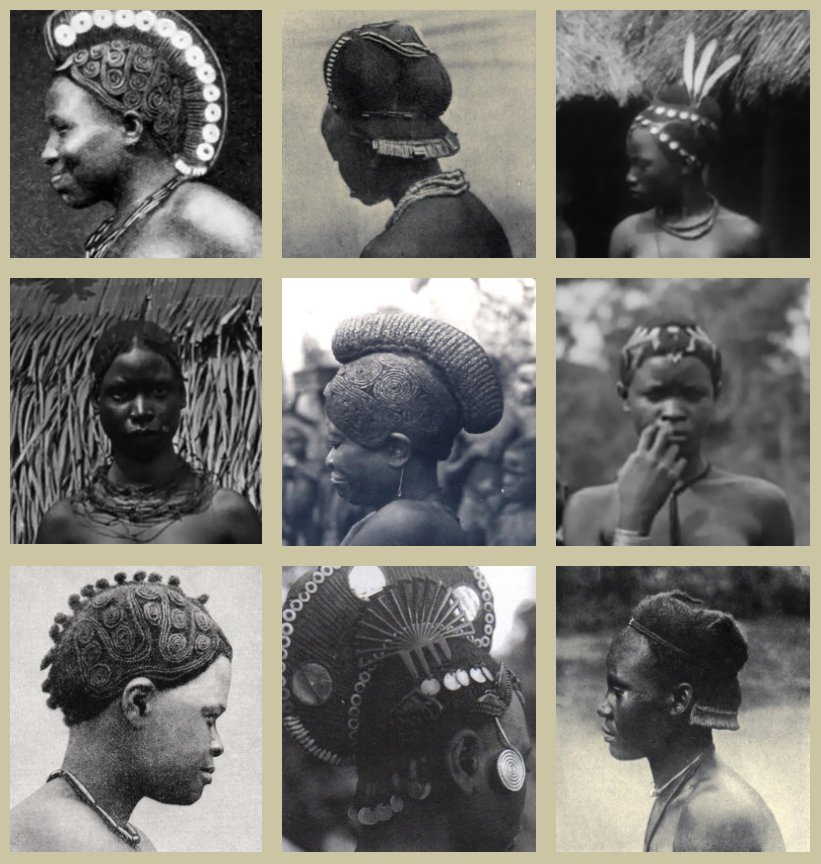
A collage of traditional Igbo women’s hairstyles showcasing the diversity and complexity of these styles. Each photograph captures a different style, reflecting the cultural identity, social status, beauty standards, and artistic expression within the Igbo community.
Historical Significance
Igbo hairstyles have always been an integral part of the community’s cultural heritage. Historically, these hairstyles signified various aspects of a woman’s life, including her marital status, age, social status, and even spiritual beliefs. The intricate designs and the use of various materials in these hairstyles reflect the creativity and artistry of the Igbo people.
The Iconic Isi Ojongo
Isi Ojongo is one of the most elaborate and culturally significant hairstyles among the Igbo. Traditionally, it was worn by both men and women, although it is more commonly associated with women today. The hairstyle is characterized by its crested design, often adorned with ornaments such as feathers, shells, beads, and coins. The process of creating Isi Ojongo is intricate and requires a high level of skill and patience.
The Ishi Owu
Ishi Owu, also known as African threading, is another traditional Igbo hairstyle that has stood the test of time. This style involves wrapping sections of hair with black thread, creating a unique and protective hairstyle. Ishi Owu is not only aesthetically pleasing but also serves to stretch and protect the hair, promoting growth and health. Married women in rural areas have used this method for generations and continue to do so.
Cultural Context and Significance
In Igbo culture, hairstyles like Isi Ojongo and Ishi Owu were not just for special occasions but were a part of everyday life. The community deeply embedded them in its social and cultural fabric. These hairstyles could indicate a woman’s marital status, age, or even her role within the community. The elaborate designs and the use of various adornments made these hairstyles a significant part of Igbo identity.

Women’s hairstyles from different Igbo groups sketched by P. A. Talbot in or before the 1920s. These sketches capture the variety and intricacy of hairdressing within the Igbo culture during that period.
Materials and Techniques
Creating an Isi Ojongo or Ishi Owu hairstyle involves a variety of materials and techniques. Women used thread, feathers, shells, bones, wood, beads, and even Igbo currency to adorn their hair. The process included pleating, plaiting, and sometimes incorporating other objects to achieve the desired look. Palm oil and charcoal were commonly used to style and maintain the hair. Additionally, mud containing colorful ores, yellow and red camwood powder or paste, and palm oil and charcoal were also used for styling. These hairstyles were not only forms of personal expression but also ways to connect with cultural traditions and ancestors.
Traditional Accessories
Igbo women’s hairstyles were often complemented by a variety of traditional accessories that enhanced their beauty and cultural significance. These adornments were not merely decorative but also carried deep cultural and symbolic meanings, reflecting the wearer’s identity and status within the community.
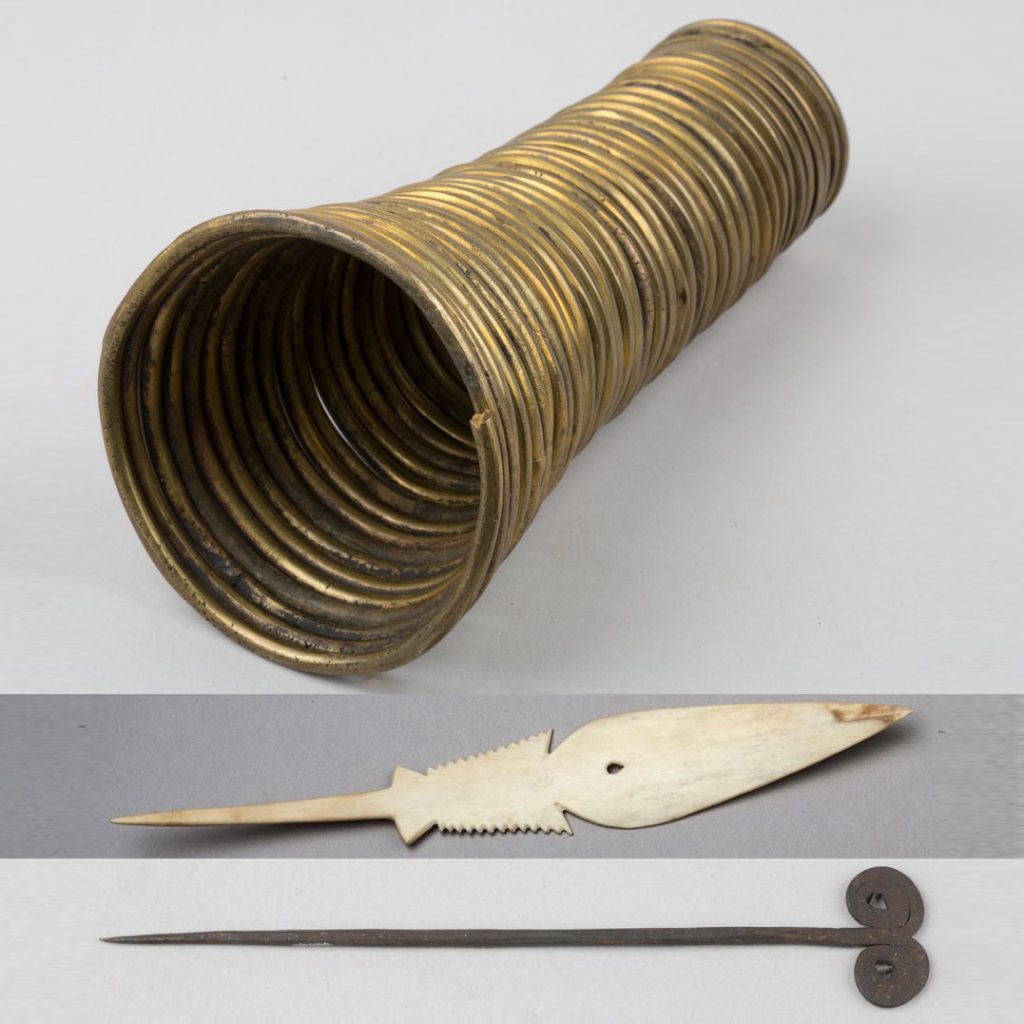
This image showcases three distinct traditional items. At the top is a cylindrical, accordion-like leg ornament, typically made of brass and wound around the leg. Right below it is a bone hair ornament intricately carved with detailed designs. At the bottom is a long, thin metal hair pin used to scratch the head. These items, housed at the Etnografiska Museet in Sweden, represent the cultural heritage and traditional adornments of the Igbo people, reflecting their artistry and customs in personal decoration.
Bone Hair Ornaments
Intricately carved bone hair ornaments were another significant accessory in Igbo hairstyling. These ornaments were made from bones and showcased detailed craftsmanship. They were used to decorate the hair, adding an element of elegance and tradition. Each piece often carries symbolic meanings, and people carefully choose them to complement the hairstyle and the occasion.
Hair Pins
Hair pins, long and thin with intricate designs, were essential tools for securing elaborate hairstyles. These pins were not only functional but also decorative, adding a touch of sophistication to the overall look. The designs of the hair pins varied, with some featuring intricate patterns and others being adorned with small ornaments, reflecting the artistic flair of the Igbo people.
Leg Anklets
Leg anklets, typically crafted from metal rings, were a common accessory worn by Igbo women. These anklets served as symbols of social status and were frequently used in traditional dances. The rhythmic jingling of the anklets added a musical element to the dances, enriching the cultural expression of the performances.
Straw/Cotton Cap/Wig
Another significant accessory in Igbo women’s hairstyling is the straw or cotton cap/wig. This headpiece, intricately woven with geometric and circular patterns, is used during dances and celebratory occasions. The cap is made from straw or cotton and features a conical shape with a long, thin tassel extending from its apex. The intricate weaving showcases the craftsmanship of the Igbo people. Worn during dances and celebrations, this cap/wig adds to the festive atmosphere and highlights the wearer’s cultural identity and heritage.
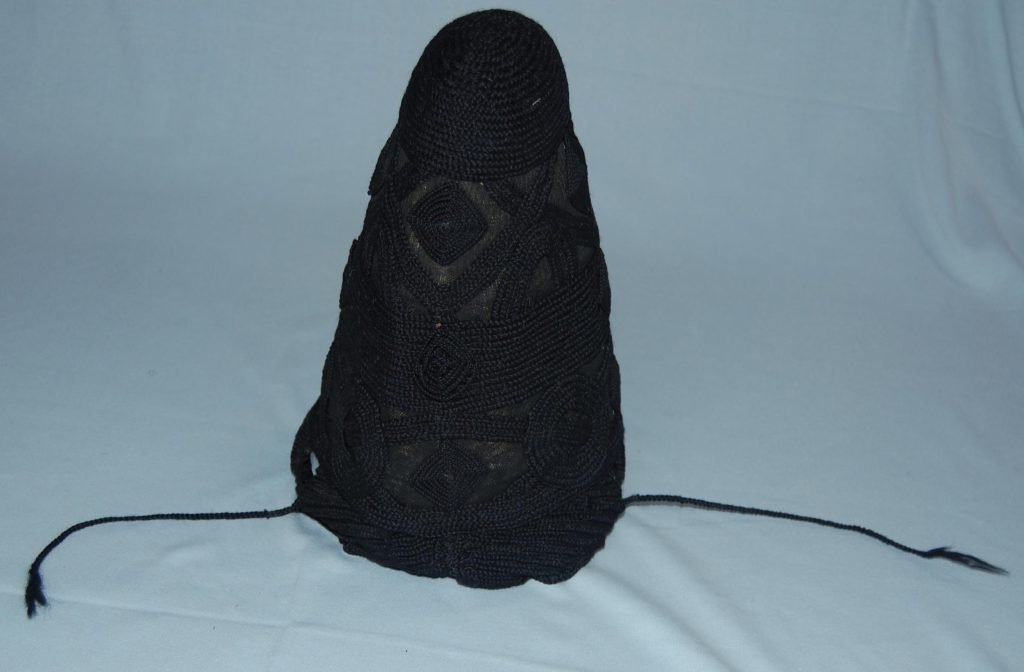
This composite cap, made from straw and cotton, features a long rounded triangular shape. The straw support is woven and sewn, covered with a knitted stockinette to which plaited cotton strands are attached using cotton thread in distinct bands containing geometric patterns. Two plaited strands on either side of the cap act as fastenings. Collected between 1931-1934, this cap reflects the intricate craftsmanship of the Igbo people and their cultural heritage.
Modern Relevance and Adaptations
While traditional hairstyles like Isi Ojongo and Ishi Owu are not as commonly seen today, their influence persists. You can still find modern adaptations of these styles, and there is a growing interest in reviving and preserving such cultural practices. These hairstyles remain symbols of pride and identity for many Igbo people, reflecting the rich cultural heritage of the community.
Conclusion
Igbo women’s hairstyles, particularly Isi Ojongo and Ishi Owu, are a testament to the creativity, artistry, and cultural significance of the Igbo people. By understanding and appreciating these traditions, we can keep the rich history of the Igbo culture alive for future generations. The enduring legacy of these hairstyles continues to inspire and connect people to their roots.
We’d love to hear from you! Share your own experiences or photos of traditional Igbo hairstyles in the comments below or tag us on social media. Let’s celebrate and preserve this beautiful aspect of Igbo culture together.
References
- Pre-colonial Nigerian cultures: Hairdressing as a work of art. Pulse.ng.
- Igbo women and girls and their hairstyles, 1900-1930. Ụkpụrụ̄: Images of Ìgbò Before.
- Hair As Heritage. IROKO Theatre Company.
Discover more from Igbo Archives
Subscribe to get the latest posts sent to your email.

